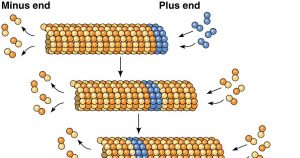Decoding the Quantum Mind | Unveiling the Hidden Drivers of Free Will | Exploring How Neural Readiness and Quantum Mechanics Converge to Shape Conscious Decision-Making

The Orchestrated Objective Reduction (Orch OR) theory, developed by Nobel Laureate Roger Penrose and anesthesiologist Stuart Hameroff, is an attempt to explain consciousness through physics and biology. This theory suggests that consciousness arises from quantum computations in microtubules within neurons, influenced by gravity-induced wave function collapse. These collapses are thought to generate proto-conscious events, which are then organized into full consciousness by biological structures in the brain【11†source】【13†source】.
Regarding mental disorders, the Orch OR theory, as it currently stands, doesn’t directly explain them. However, it posits that consciousness arises from the quantum level, which could imply that any disturbances at this microscopic scale might impact mental health. This perspective, if validated, could offer a new way to understand and potentially approach mental disorders.
The theory hypothesizes that wave function collapse in quantum particles is influenced by gravity, which, in turn, affects microtubules within neurons. These microtubules are proposed to play a key role in neural processing and consciousness. This perspective suggests a much more fundamental and quantum-based mechanism for brain activities, including the generation and processing of electrical impulses in the brain.
Regarding addiction and drug overdose, Orch OR doesn’t provide a direct explanation. However, if the theory is correct and consciousness and brain functions are deeply connected to quantum processes, it could imply that these conditions might also be influenced by quantum-level disturbances or alterations.
If a theory like Orch OR successfully solves the mystery of consciousness, it could potentially offer insights into mental illness. Since consciousness and many mental illnesses are rooted in brain function, understanding one could illuminate the other. However, the relationship between consciousness and mental illness is complex and not necessarily direct. Mental illnesses are influenced by a wide array of factors, including genetics, environment, and neurochemistry, and a comprehensive understanding of consciousness might not immediately translate into cures for these conditions.
The theory’s perspective on free will is also intriguing. Penrose’s view suggests that consciousness and free will are products of quantum processes, challenging traditional views of deterministic brain function. The theory implies that if consciousness arises from quantum processes, then our conscious decisions might also be influenced by these non-deterministic processes, offering a different perspective on the free will debate.
This approach to understanding consciousness and brain function is still theoretical and subject to experimental verification. It represents a significant departure from traditional neuroscience and requires a paradigm shift in how we think about the brain, consciousness, and mental health.
Key Takeaways:
- Quantum Processes and Consciousness: The Orch OR theory, proposed by Roger Penrose and Stuart Hameroff, suggests that consciousness arises from quantum computations within microtubules in the brain’s neurons. This theory links gravity-induced wave function collapse with the emergence of consciousness, proposing a fundamental quantum mechanical basis for conscious experience.
- Potential Implications for Understanding Mental Disorders: While the Orch OR theory doesn’t provide a direct explanation for mental disorders, it opens up a potential new perspective. If consciousness stems from quantum processes in the brain, then disturbances at this microscopic level could have significant implications for mental health. This suggests that understanding quantum brain processes might offer new insights into the nature and treatment of mental illnesses.
- Reframing the Free Will Debate: The Orch OR theory offers a fresh perspective on the free will debate by suggesting that consciousness and decision-making could be influenced by quantum processes, which are inherently probabilistic and not entirely deterministic. This perspective challenges traditional deterministic views of brain function and implies that human consciousness and decision-making might have a non-deterministic component rooted in quantum mechanics.
“Penrose’s theory proposes that each gravity-induced collapse causes a little blip of proto-consciousness: micro-events that get organized by biological structures called microtubules inside our brains into full-bodied awareness.”
More details: here

Leave a Reply